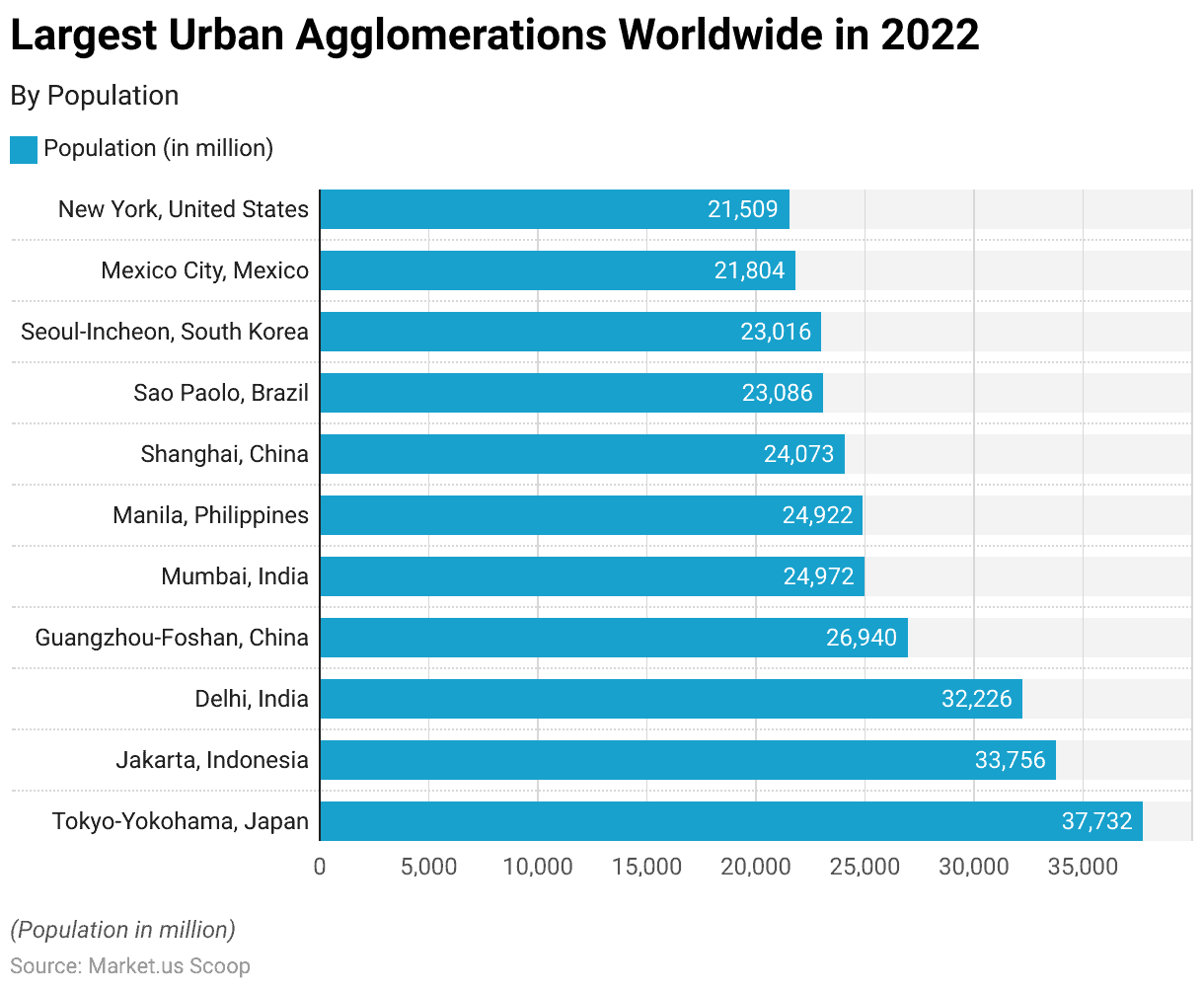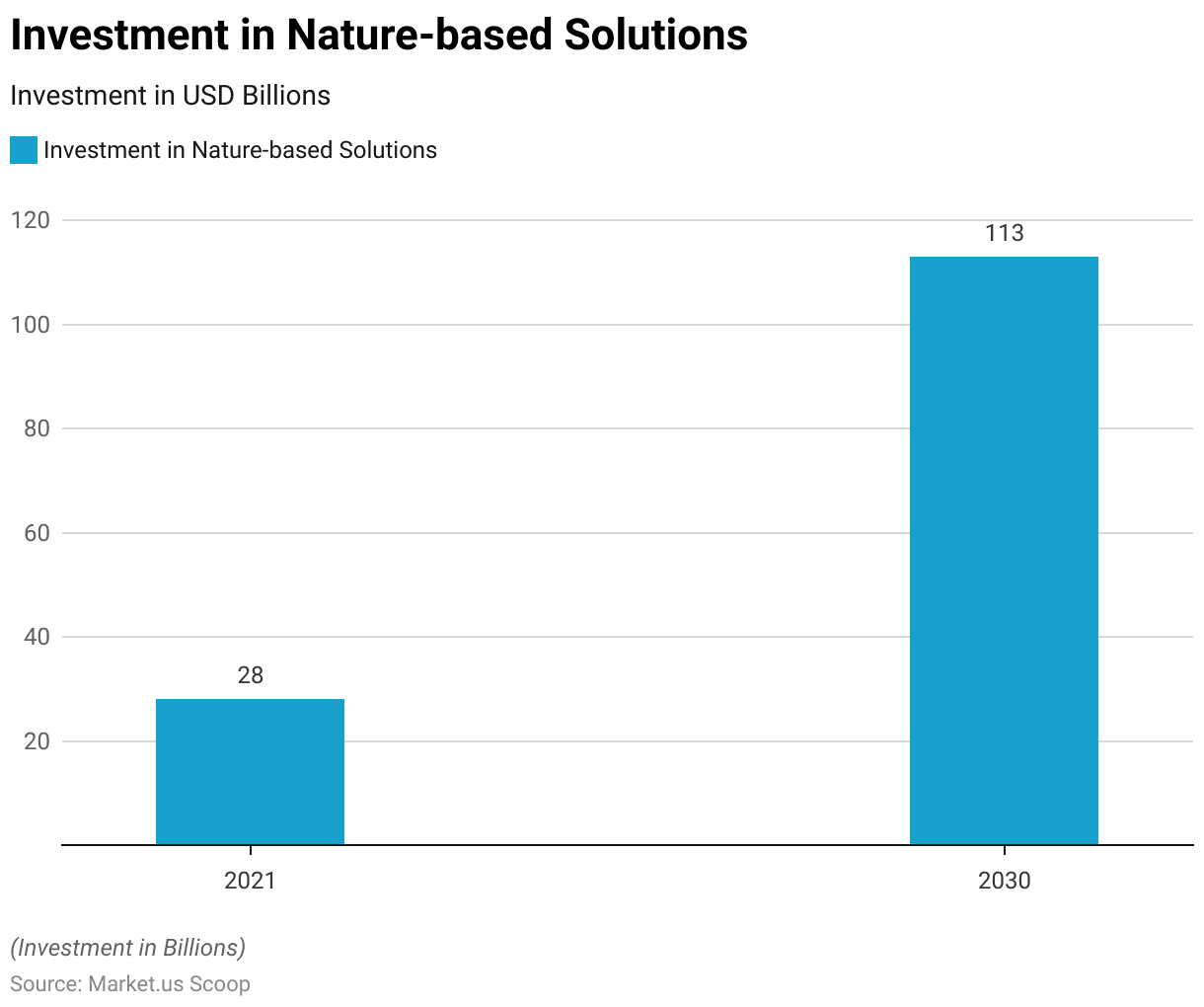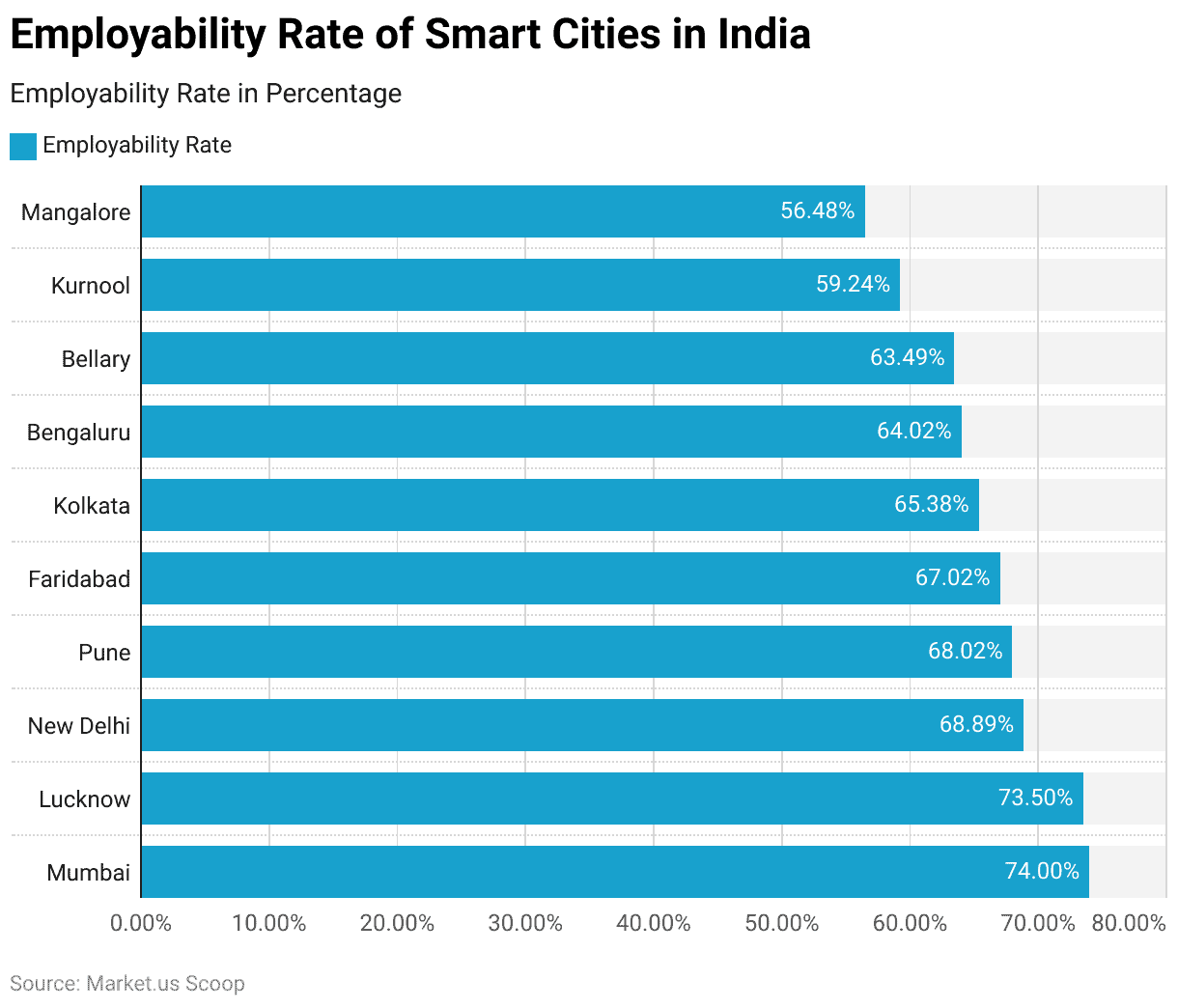Table of Contents
Introduction
According to Smart City Statistics, A smart city is an urban area that uses technology, data, and innovative solutions to enhance the quality of life for its residents, optimize resource management, and improve overall urban operations. The concept of a smart city revolves around integrating various digital technologies and data-driven strategies to address urban challenges and create more sustainable, efficient, and livable environments.
Ultimately, a smart city aims to improve its inhabitants’ overall quality of life by providing efficient services, reducing pollution, enhancing public spaces, and promoting social inclusion.
Editor’s Choice
- The Smart City Market size is expected to be worth around USD 6782 Billion by 2032
- Smart cities are expected to generate a substantial economic benefit of approximately $20 trillion by 2026.
- Cities embracing Smart City solutions could enhance their energy efficiency by 30% over two decades.
- Within OECD nations, the adoption of digital government services tripled from 2006 to 2016, with 36% of citizens choosing online submissions in 2016.
- In the European Union, integrating digital services has led to an 85% reduction in city operating costs.
- According to Yonsei University’s Smart City Development Index, roughly one-third of cities provide Smart City services through apps or websites for transportation, 23% for culture and tourism, and 8% for city administration.
- Based on IMD’s Smart City Index, the top-ranked Smart Cities include Singapore, Helsinki, and Zurich.
- Leading Smart City governments globally encompass Singapore, Seoul, London, Barcelona, and Helsinki.

Global Smart City Market Revenue
- For the next decade, the revenue generated by Smart Cities is expected to exhibit substantial growth.
- In 2020, Smart City revenue stood at $43.72 billion, which surged to $58.98 billion in 2021, reflecting a notable uptick.
- The upward trajectory continued in 2022, reaching $74.24 billion; by 2023, it is projected to climb to $89.49 billion.
- As we progress to 2026, Smart City revenue is forecasted to reach an impressive $135.3 billion, demonstrating the increasing significance of smart urban developments.
- Looking further ahead, the trajectory remains positive, with projected revenues of $150.5 billion in 2027 and $165.8 billion in 2028, underscoring Smart Cities’ continued global economic vitality.

Population and Urbanization
Population Growth in Urban Areas
- Public Safety Solutions for Smart City Market is projected to reach a valuation of USD 1678.3 Billion by 2032
- Currently, 55% of the global population resides in urban regions, which is anticipated to rise to 68% by 2050.
- This shift from rural to urban living, known as urbanization, coupled with overall population growth, will result in an additional 2.5 billion people dwelling in urban areas by 2050.
- Approximately 90% of this growth is expected in Asia and Africa.
- Presently, the most urbanized regions are Northern America (82% urban population in 2018), Latin America and the Caribbean (81%), Europe (74%), and Oceania (68%).
- In contrast, Asia’s urbanization rate is approximately 50%, while Africa remains largely rural, with 43% of its population residing in urban areas.
Cities Ranking and Mega Cities
- In the realm of global urban centers, Tokyo-Yokohama, Japan, stands as the most populous, boasting a staggering 37.7 million inhabitants.
- Jakarta, Indonesia, has 33.8 million residents, and Delhi, India, has 32.2 million, following closely behind.
- Other major metropolises on this list include Guangzhou-Foshan, China, at 26.9 million. Mumbai, India, has 25 million inhabitants, and Manila, Philippines, has 24.9 million inhabitants.
- Shanghai, China, is home to 24.1 million people, while Sao Paulo, Brazil, and Seoul-Incheon, South Korea, each house over 23 million residents.

Infrastructure and Connectivity
Internet Access and Broadband Penetration
- In 2022, approximately 66% of the global population was connected to the internet.
- Urban areas worldwide had an internet usage rate of about 82%, while rural areas lagged at 46%.
- The lowest internet access was recorded in rural regions of Landlocked Developing Countries (LLDCs), where only 26% of the population had internet access.
- In contrast, small island developing countries boast a high internet adoption rate, with 82% of their residents connected to the web.
- A report from Kaleido Intelligence predicts a substantial surge of over 140% in the use of data by smart cities between 2023 and 2027.
- One of the most lucrative sectors in terms of connectivity revenues will be intelligent traffic management, primarily driven by video usage. Revenue per airtime in this sector is forecasted to surpass US$900 million by 2027, a substantial increase from the USD 292 million recorded in 2022.
Energy Infrastructure in Smart City
- Smart cities in the United States, Denmark, Canada, India, and Australia efficiently meet their energy needs using Renewable Energy Sources (RES), accounting for 40% to 100% of their energy supply. RES is acknowledged as the most eco-friendly energy generation method.
- As per the International Energy Agency’s (IEA) net-zero plan, RES is set to contribute 84% of global electricity production, 65% to household heating, and 38% to industrial heating by 2040.
- Globally, the share of electricity generated from RES is projected to reach 61% by 2030 and a substantial 88% by 2050.
- However, it appears unlikely that Russia will achieve an 80% share of electricity generation from RES by 2040.
- Projections from the Skolkovo Research Center suggest that by 2040, the consumption of all renewable energy sources, including hydropower, will grow by 76% to 115%.
Water Supply and Sanitation
- Between 2000 and 2030, Africa and Asia are expected to witness a doubling of their urban populations.
- While there were notable improvements in drinking water and sanitation access between 1998 and 2008, with 1052 million gaining access to better drinking water and 813 million to improved sanitation, these gains were partly offset by a concurrent urban population increase of 1089 million.
- On a global scale, approximately one in four urban residents, 789 million individuals, lack access to improved sanitation facilities.
- In metropolitan distribution systems, leakage-loss rates exceeding 50% are not unusual.
Investments in Smart City Infrastructure
- The Smart City ICT Infrastructure market anticipated to reach USD 6,467.9 Billion by 2032
- Opportunities for investing in nature-based solutions and land-sparing interventions, promoting environmentally friendly urban development, could reach approximately 600 billion U.S. dollars globally by 2030.
- In 2021, investments in nature-based solutions amounted to just 28 billion U.S. dollars, but there is the potential for this figure to increase to 113 billion U.S. dollars by the year 2030.
- As of October 2022, the High-Speed Rail Line in California, USA, stood out as one of the most valuable infrastructure endeavors globally, whether in the planning stages or actively being constructed.
- A significant portion of the notable infrastructure projects currently in progress worldwide primarily consisted of railway systems.
- These railway projects spanned across various regions, including Norway and Sweden, the United Kingdom, the United States, parts of Asia, South-East Asia, and Japan.
- Notably, India had the highest count of substantial infrastructure initiatives valued at more than 25 million U.S. dollars.

Economic Indicators of Smart City
GDP Growth in Smart City
- At the top of the list, the City of San Marino stands out with a GDP of $1.54 billion, representing an astonishing 90.872% of San Marino’s national GDP.
- Similarly, Luxembourg City-Trier boasts a robust GDP of $69.45 billion, contributing significantly to Luxembourg’s economy at 79.925% of its national GDP.
- Moving across the globe, we find Montevideo in Uruguay, where its GDP of $49.70 billion accounts for 77.314% of the national GDP.
- Further east, Seoul in South Korea has a substantial GDP of $926.79 billion, making up 51.355% of the country’s total GDP.
- Riga in Latvia, with a GDP of $20.00 billion, contributes 49.670% to the national GDP, while Taipei in Taiwan follows closely behind, with a GDP of $407.84 billion, constituting 48.482% of Taiwan’s national GDP.
- Bangkok in Thailand, Lima in Peru, and Manila in the Philippines all play pivotal roles in their respective nations’ economies, with their metropolitan GDPs accounting for 48.299%, 47.344%, and 46.750% of their national GDPs, respectively.
Employment Rates in Smart City
- In 2019, several major cities in the United States exhibited varying population growth rates, reflecting their dynamic appeal to residents. San Francisco County/City, CA, led the pack with an unemployment rate of 2.2%, securing the top rank in this list.
- Following closely were Honolulu County/City, HI, and Seattle City, WA, with a rate of 2.4%, sharing the second position.
- Austin City, TX, and Nashville-Davidson (consolidated) City, TN, tied for the fourth spot with an unemployment rate of 2.5%.
- Lastly, Miami City, FL, rounded out the list with an unemployment rate of 2.8%, making it the tenth-ranked city in terms of unemployment in 2019.
- The employability rates in various Indian cities paint an intriguing picture of the job market landscape. Mumbai leads the way with a robust employability rate of 74%, reflecting its economic powerhouse and job hub status.
- Lucknow closely follows with a commendable employability rate of 73.5%, showcasing its growing employment opportunities.
- New Delhi, the capital city, maintains a healthy employability rate of 68.89%, indicative of its diverse job market.
- Pune and Faridabad are not far behind, boasting employability rates of 68.02% and 67.02%, respectively, highlighting their significance as employment centers.
- Kolkata, known for its cultural heritage, registers an employability rate of 65.38%, while Bengaluru, often dubbed the “Silicon Valley of India,” stands at 64.02%.

Notable Smart City Initiatives
Singapore
- Singapore launched its Smart Nation initiative in 2014, implementing various smart technologies in the public and private sectors.
- This includes the widespread adoption of contactless payments for the 7.5 million passengers using public transportation.
- Singapore introduced a digital health system to address challenges posed by an aging population, promoting video consultations and wearable IoT devices for patient monitoring.
- In 2021, Singapore announced plans for an eco-smart city in Tengah, the western region, which will be entirely vehicle-free.
- This forest city will comprise five residential districts with 42,000 houses, prioritizing safe zones for pedestrians and cyclists.
Helsinki, Finland
- Helsinki is determined to achieve carbon neutrality by 2035 and has made significant progress.
- In 2017, they had already reduced emissions by 27% compared to 1990.
- They are also committed to cutting traffic emissions by 69% by 2035 by transitioning the entire city bus fleet to electric, expanding public transportation networks, and increasing electric car charging infrastructure.
- Given that heating contributes to over half of the city’s emissions, Helsinki focuses on energy-efficient renovations that could reduce building emissions by 80%.
Oslo, Norway
- Oslo, Norway, with a population of around 670,000, is making a remarkable push for electric vehicles, aiming to have all vehicles in the city go electric by 2025.
- They’ve introduced incentives like free parking, access to bus lanes, and reduced taxes and toll prices for zero-emission cars.
- Oslo is committed to becoming carbon neutral by 2050. It implements various smart initiatives, such as zero-emission construction sites and retrofitting existing buildings to establish circular waste management and green energy systems.
New York City, United States
- New York is outfitting 10,000 city intersections with cameras and sensors to create a connected infrastructure with adaptive signals.
- They’ve also launched a Connected Vehicle Pilot Program to gather and analyze data from connected vehicles, which will help enhance real-time safety and traffic management through V2X initiatives.
London, United Kingdom
- In 2020, London introduced the Smart Mobility Living Lab (SMLL), a cutting-edge urban testing ground. SMLL offers 5G connectivity for connected and self-driving cars.
- According to O2, the mobile operator behind SMLL, this initiative could:
- Cut traffic time by 10% for drivers.
- Save £880 million annually.
- Lower yearly CO2 emissions by 370,000 metric tons.
Paris, France
- Paris has made significant strides in road safety and traffic management since 2010, resulting in a 40% reduction in traffic fatalities.
- Additionally, the city is set to invest 100 million euros in enhancing its transportation infrastructure for connected and autonomous vehicles.
- Furthermore, Paris is in the process of replacing its entire bus fleet with electric vehicles.
Discuss your needs with our analyst
Please share your requirements with more details so our analyst can check if they can solve your problem(s)



